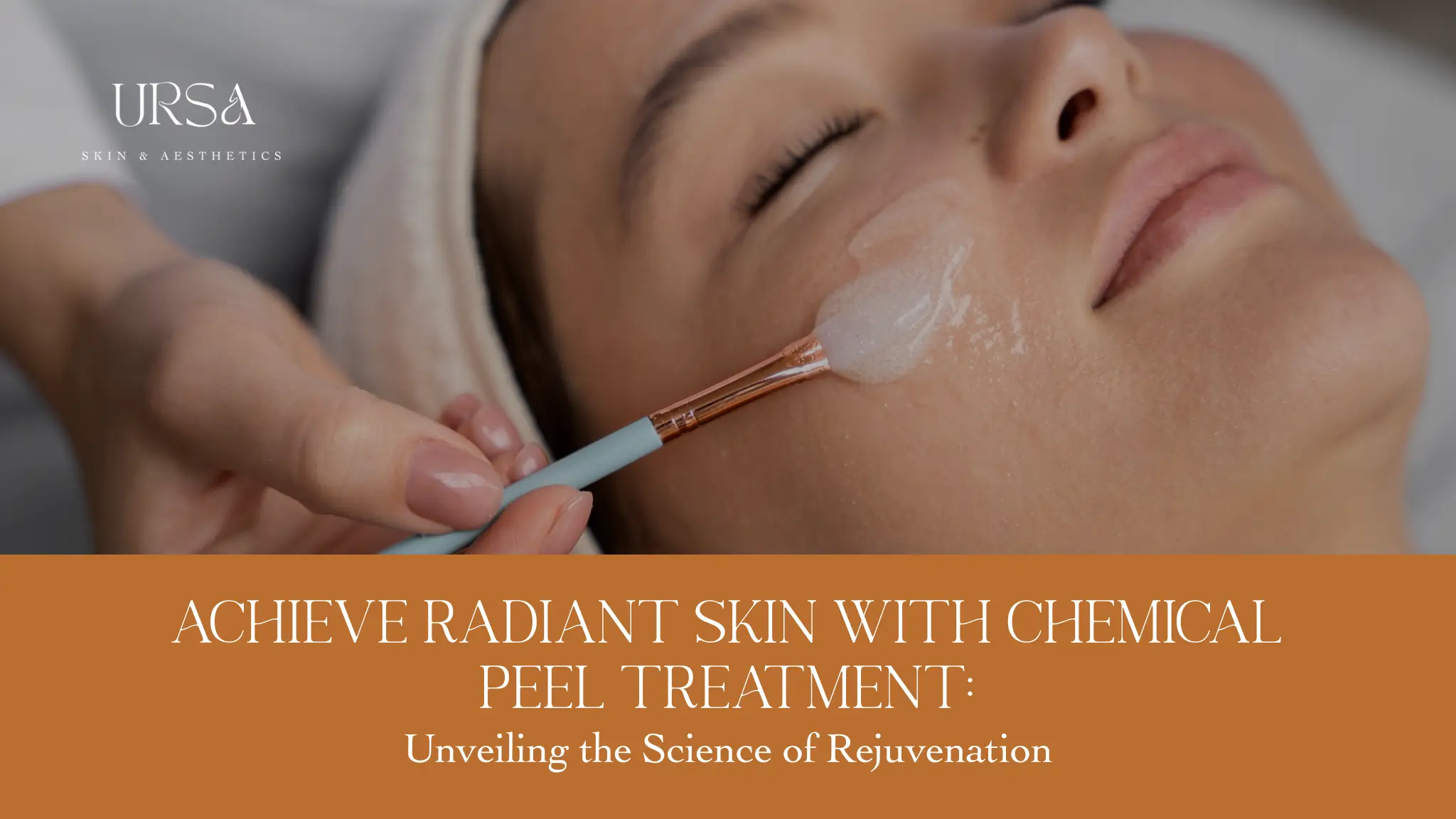Achieve Radiant Skin with Chemical Peel: Unveiling the Science of Rejuvenation
In the world of skincare, the quest for flawless, radiant skin is a journey many of us embark upon. Amidst a sea of treatments and products, a chemical peel stands as a powerful tool that can transform dull and tired skin into a canvas of vibrant beauty.
In this comprehensive guide, we will explore the science of chemical peel, its benefits, how URSA Skin & Aesthetics can assist you, and everything you need to know before considering this rejuvenating procedure. Let’s embark on a journey to discover the secret behind peeling away the years and revealing your skin’s true potential.
At URSA Skin & Aesthetics, we understand each individual’s unique skincare journey. With a commitment to excellence and a team of experienced professionals, URSA is your trusted partner in achieving radiant skin through chemical peel treatments.
Peeling Back the Layers: Understanding Chemical Peel
At its core, a chemical peel is a skin-resurfacing procedure that uses a specially formulated chemical solution to exfoliate the outermost layers of the skin. This process promotes the shedding of dead skin cells, revealing fresh, youthful skin underneath.
Chemical peels vary in intensity, from superficial to deep peels, each targeting different skin concerns and offering varying levels of rejuvenation.
The Three Tiers of Chemical Peel
Superficial Peels
Mild chemical peel that target the outermost layer of the skin (epidermis). Effective for minor issues such as uneven texture, fine lines, and mild discoloration.
Medium Peels
Penetrate deeper into the epidermis to address moderate concerns like acne scars, pigmentation irregularities, and deeper wrinkles.
Deep Peels
Reach the lower layers of the dermis to provide comprehensive rejuvenation for severe issues like deep wrinkles, sun damage, and pronounced scars.
How Chemical Peel is Performed
Light Peel
A cotton ball, gauze, or brush applies a chemical solution (e.g., salicylic acid) to the targeted area. The skin may whiten and feel slightly uncomfortable. Afterward, the solution is removed or neutralized.
Moderate Peel
The doctor applies a chemical solution (e.g., trichloroacetic acid or glycolic acid) using a cotton-tipped applicator or sponge. A cold compress may be applied as the skin lightens. For blue peel, the skin may appear blue for a few days.
Deep Peel
Performed under anesthesia, with phenol applied in 15-minute segments. The skin may turn white or grey. Deep peels may require IV monitoring and careful observation.
The Marvellous Benefits of Chemical Peel
- Skin Rejuvenation and Radiance – Exfoliates dull skin to reveal a fresh, glowing complexion.
- Acne and Blemish Control – Unclogs pores, reduces oil, fades post-acne marks, and improves texture.
- Pigmentation Correction – Reduces sunspots, age spots, and melasma for even skin tone.
- Fine Line and Wrinkle Reduction – Stimulates collagen production for smoother, firmer skin.
- Improved Skin Texture and Tone – Smooths rough patches and evens out complexion.
- Sun Damage Repair – Encourages new healthy skin cells and minimizes UV damage.
- Scar Reduction – Gradually fades acne scars and minor injury marks.
- Pore Minimization – Tightens enlarged pores for smoother skin.
- Increased Product Absorption – Enhances penetration of post-peel skincare products.
- Boosted Confidence – Clearer, youthful skin improves self-esteem.
- Customizable Treatment Options – Tailored to your specific skin needs.
- Minimal Downtime for Superficial Peels – Quick recovery with mild redness or peeling.
- Non-Surgical Solution – Visible results without invasive procedures.
- Affordable Skin Enhancement – Cost-effective compared to other treatments.
- Long-Lasting Effects – Results can be maintained with regular sessions.
- Boosting Collagen Production – Supports skin elasticity and firmness for a youthful look.
Professional vs. DIY: The Chemical Peel Dilemma
While home remedies exist, professional chemical peel treatments are tailored to your skin’s needs. A trained dermatologist or aesthetician accurately assesses your skin, chooses the appropriate peel type and concentration, and minimizes the risk of adverse effects.
Risks of DIY Chemical Peels
At-home chemical peels can lead to burns, scarring, worsening skin conditions, or infections. Consulting a skincare professional ensures safe and effective results.
Possible Side Effects
- Redness, dryness, stinging, or slight swelling
- Permanent inability to tan with deep peels
- Rare but serious risks: scarring, infections, and potential organ impact with phenol-based deep peels
Finding Your Perfect Chemical Peel Near Me
Consulting the Experts
Start your journey at URSA Skin & Aesthetics with experienced dermatologists offering chemical peel treatments. Consultation helps determine the most suitable peel type for your skin concerns.
Tailoring the Treatment
The professional will recommend peel type, concentration, and the number of sessions to achieve your desired results.
Conclusion
In the pursuit of ageless beauty, chemical peel treatments offer a journey toward vibrant and rejuvenated skin. From superficial peels to deep transformational treatments, chemical peel procedures shed away the years and reveal your skin’s masterpiece. Always pursue this journey under professional guidance to ensure safety and optimal results. Unveil the radiant canvas your skin has been waiting to shine.
